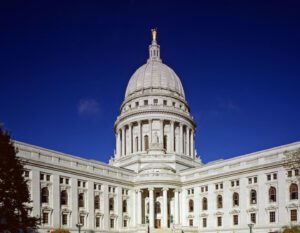Report: Kentucky education funding, performance trending in different directions
(The Center Square) – A report released Thursday by an in-state think tank found funding for Kentucky’s public schools has dramatically increased since 1990 while student performance has…

(The Center Square) – A report released Thursday by an in-state think tank found funding for Kentucky’s public schools has dramatically increased since 1990 while student performance has waned.
John Garen, a retired economic professor at the University of Kentucky and a member of the Board of Scholars for the Bluegrass Institute for Public Policy Solutions, noted that after adjusting for inflation, per-pupil funding for students in elementary, middle and high schools rose from $7,793 in 1990 to $17,337 in 2022.
Despite that increase, test scores for students in fourth and eighth grades have not kept up the same pace. In fact, over the last decade, 2013-2022, results in reading and math in both grades have declined by at least 3.1%.
That’s after students had achieved increases of up to 12.3% before 2013. Garen also found the achievement gap between white and Black students has widened over the years.
Lexington-based BIPPS, which describes itself as an organization dedicated to free markets, individual liberty and limited government, has been one of Kentucky’s leading proponents for legalizing school choice programs.
The report comes at the start of the 2024 General Assembly, a session that will include approval of a new two-year budget. Education spending will be a significant part of that spending plan. On Wednesday, legislative leaders told reporters they will support continuing an initiative that’s led to record school funding in recent years.
Jim Waters, the institute’s president, said the study gives lawmakers, taxpayers and other stakeholders a “substantive snapshot” of spending trends in education.
“With K-12 education funding expected to comprise the largest single portion of the state’s budget, taxpayers deserve a robust return on their investment,” he added.
Gov. Andy Beshear, a Democrat, has called on lawmakers to mandate an 11% raise for teachers and other public school employees. However, House Speaker David Osborne, R-Prospect, and Senate President Robert Stivers, R-Manchester, said they prefer giving funding to districts and letting them choose how to allocate it.
“We all know that we have to be competitive with our sister states,” Stivers said Wednesday. “We have to be competitive with the private sector, and there will be a need for the local level officials, school boards and superintendents, to have the tools to be competitive.”
Garen’s study found teacher salaries have not kept pace with inflation in recent years, nor have they kept up with the increase in funding for public schools. Instead, the growth in teacher salaries was less than half of that for overall spending.
He also noted districts have substantially increased spending for pension and health care plan contributions.
“From 1990 to 2020, the number of non-teacher staff grew by 55%, while the number of students in Kentucky grew by 5%, and the number of teachers rose by 21%,” the report stated.



